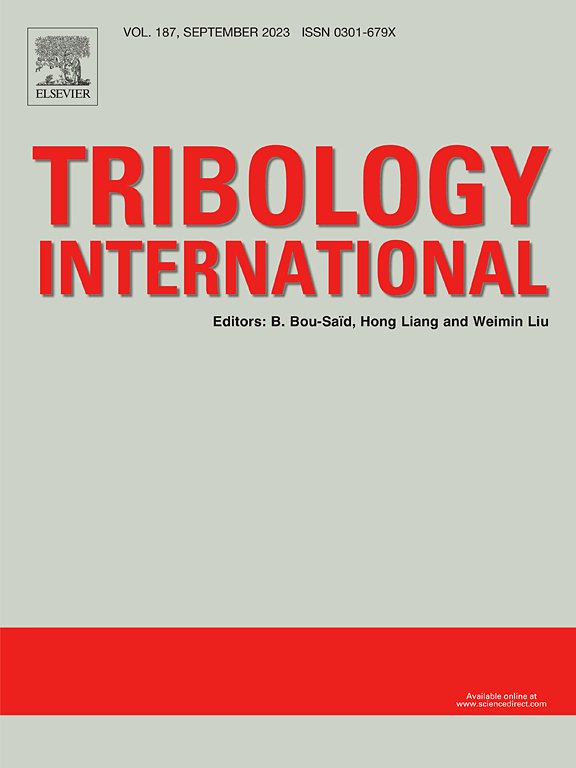Effect of interlayer bonding and stacking structure on the tribological properties of graphene oxide coatings
IF 6.1
1区 工程技术
Q1 ENGINEERING, MECHANICAL
引用次数: 0
Abstract
Graphene oxide (GO) coating is widely used while its lubricating performance depends on the stacking structure and operational environment. Here, GO coatings were fabricated by spraying, spinning, and electrostatic self-assembly using Cu2+ ion as the coordination. The influence of stacking structure on the tribological properties in humid air, dry nitrogen, and vacuum were evaluated. The results show that Cu2+-coordinated self-assembled coatings with strong interlaminar bonding and ordered stacking structure exhibit lower wear under test conditions, especially in a vacuum with a stable friction coefficient of ∼0.03, benefit from the increased contact area between GO sheets, reduced stress concentration, inhibited hydrogen bonding between GO and environmental water, and passivates the surface defects of the coating when subjected to shear stress.
层间键合和叠层结构对氧化石墨烯涂层摩擦学性能的影响
氧化石墨烯涂层的应用非常广泛,但其润滑性能取决于层积结构和使用环境。本文以Cu2+离子为配位,通过喷涂、纺丝和静电自组装制备氧化石墨烯涂层。研究了叠层结构对湿空气、干氮和真空环境下摩擦磨损性能的影响。结果表明,在测试条件下,具有强层间键合和有序叠层结构的Cu2+配位自组装涂层表现出较低的磨损,特别是在稳定摩擦系数为~ 0.03的真空条件下,这得益于氧化石墨烯片间的接触面积增加,应力集中降低,抑制氧化石墨烯与环境水之间的氢键,钝化涂层在剪切应力作用下的表面缺陷。
本文章由计算机程序翻译,如有差异,请以英文原文为准。
求助全文
约1分钟内获得全文
求助全文
来源期刊

Tribology International
工程技术-工程:机械
CiteScore
10.10
自引率
16.10%
发文量
627
审稿时长
35 days
期刊介绍:
Tribology is the science of rubbing surfaces and contributes to every facet of our everyday life, from live cell friction to engine lubrication and seismology. As such tribology is truly multidisciplinary and this extraordinary breadth of scientific interest is reflected in the scope of Tribology International.
Tribology International seeks to publish original research papers of the highest scientific quality to provide an archival resource for scientists from all backgrounds. Written contributions are invited reporting experimental and modelling studies both in established areas of tribology and emerging fields. Scientific topics include the physics or chemistry of tribo-surfaces, bio-tribology, surface engineering and materials, contact mechanics, nano-tribology, lubricants and hydrodynamic lubrication.
 求助内容:
求助内容: 应助结果提醒方式:
应助结果提醒方式:


